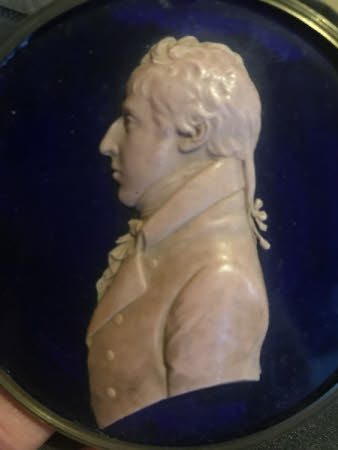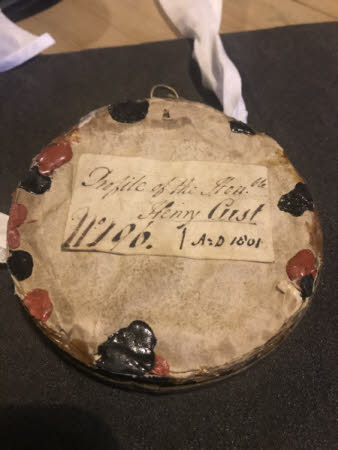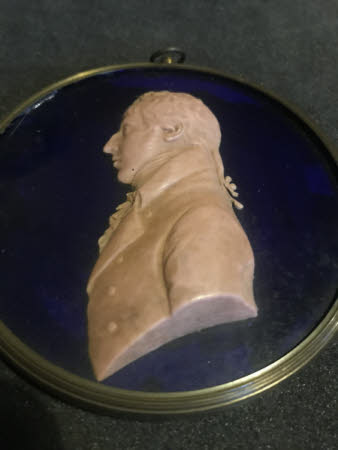The Reverend The Honorable Henry Cockayne Cust
Category
Art / Sculpture
Date
1801
Materials
Pink wax on blue glass
Measurements
95 mm (Circumference)
Order this imageCollection
Belton House, Lincolnshire
NT 435990.1
Summary
Wax on blue glass, portrait relief medallion, The Reverend Henry Cockayne Cust (1780-1861), 1801. Pink wax portrait miniature showing Cust in profile, facing left. Mounted on circular blue glass and framed in brass. Paper backing is sealed with red and black-blue wax and is affixed with paper label inscribed in pen and black ink: ‘Profile of the Hon.ble | Henry Cust | No 196. | A.D 1801’. See 435990.2 for the plaster cast.
Full description
Wax was used for portrait miniatures in the 18th and 19th centuries. Wax portraits were either sculpted in relief, as in the present example, or in bust form; they could be in cream wax, or tinted, usually in pink, or polychrome. Many sculptors who specialised in wax were itinerant artists, who would visit country houses to take likenesses. Although a much cheaper form of portraiture than a large bust in marble, wax portraits were extremely popular amongst the nobility and royalty. Their appeal lay in the incredible verisimilitude that could be achieved, as well as the speed with which a portrait could be produced. Wax portraits could also be cast a number of times, enabling those commissioning a portrait to have multiple versions to give to friends and family. A wax portrait was initially modelled in a soft wax and was then cast in a harder wax and finished by hand. Here, a plaster cast has been taken of the original wax portrait so that multiple impressions could be produced and distributed. Alice Rylance-WatsonOctober 2018
Provenance
Purchased with a grant from the National Heritage Memorial Fund (NHMF) from Edward John Peregrine Cust, 7th Baron Brownlow, C. St J. (b.1936) in 1984.
Credit line
Belton House, The Brownlow Collection (acquired with the help of the National Heritage Memorial Fund by the National Trust in 1994)
Marks and inscriptions
Back: Paper backing affixed with red and blue-black wax blobs inscribed in pen and black ink: Profile of the Hon.ble | Henry Cust | No 196. | A.D 1801


